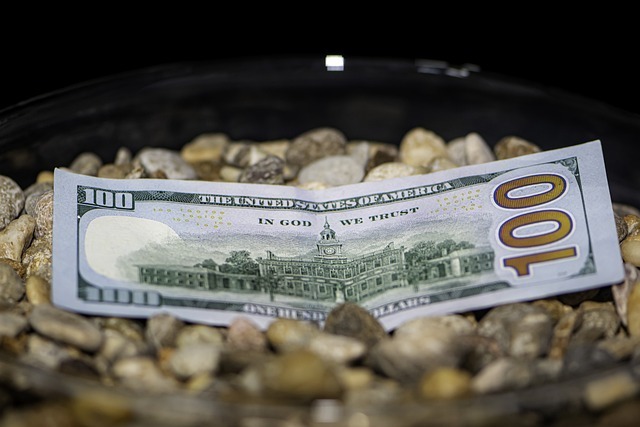In this article, we have covered the highlights of global market news about the AUD/USD, NZD/USD, USD/TRY and USD/CAD.
AUD/USD Price Analysis: Bears are closing on the 0.6700 support level.
The intraday low of 0.6730 is being held by the AUD/USD, which has reversed the previous day’s gains going into Thursday’s European session.
As a result, the Australian dollar pair continues its retreat from the swing low of February 23 amid negative MACD signs.
The lower-high formation since late Wednesday and the quote’s persistent trading below the 200-Hour Moving Average strengthen the downward bias (HMA).
The AUD/USD pair is poised for further decline amid these maneuvers.
Nevertheless, a confluence of the prior resistance line from February 20 and a horizontal region of the lows this week, around 0.6700, looks to be a difficult nut for the sellers to crack.
The support above the confluence acts as a barrier to further decline, and the RSI (14) line, rapidly descending into oversold territory, does the same.
If the AUD/USD continues to trend down beyond 0.6700, a sharp decline into the bottom of December 2022, which is around 0.6630, cannot be ruled out.
However, the AUD/USD pair’s immediate upside is restrained by a successful breach of the previously indicated horizontal barrier around 0.6785. The 200-HMA level of close to 0.6800 may serve as the bears’ last line of defense.
NZD/USD Price Analysis: Mean reversion to the 50-EMA suggests that the NZ Dollar is a good purchase.
In the early European session, the NZD/USD pair retested its day low at 0.6222. The Kiwi asset is under pressure, and rising US rates have soured the market atmosphere. The 10-year US Treasury rates have increased to around 4.03% but are still holding steady.

Investors’ concerns about the US economy’s recession have caused a decline in S&P500 futures during the Asian session. The Federal Reserve (Fed) plans to raise interest rates over 5% and maintain them there until 2023. In line with the risk-off market sentiment, the US Dollar Index (DXY) has re-expanded its day high above 104.70.
After failing to continue its bullish reversal above the horizontal barrier set from the February 21 high at 0.6263 on an hourly timeline, NZD/USD has corrected to be close to the 50-period Exponential Moving Average (EMA) at around 0.6223.
The momentum oscillator has already produced a positive reversal, according to an examination of the Relative Strength Index (RSI) (14). The RSI (14)’s oscillation range has already changed to 40.00-80.00. As a result, the momentum indicator is anticipated to find support near 40.00.
USD/TRY bulls flirt with 19.00 as rising yields join a cautious atmosphere ahead of Turkish inflation.
In the early hours of Thursday, USD/TRY tested bullish commitments at 18.90. The Turkish Lira (TRY) pair does this by drawing cues from the stronger US Treasury note rates and expressing a cautious attitude ahead of the release on Friday of Turkish inflation data for February.
Key central bankers’ hawkish remarks combine with worries about China and Russia to revive the market’s economic pessimism, which drowns US Treasury bonds without significant data or events. The same is combined with generally stronger US data and dismal Turkish figures to support the USD/TRY bulls.
In light of this, the yield on US 10-year Treasury bonds increased to the highest level seen since early November 2022 by breaking through the 4.0% level, while the yield on its two-year equivalent surged to the greatest level seen since June 2007 by flashing the 4.92% level at the latest. The increase in US Treasury bond rates reflects the market’s concerns, which have recently weighed on S&P 500 Futures and tested Wall Street bulls.
USD/CAD Price Analysis: Buyers need acceptance from 1.3620
Early on Thursday in Europe, USD/CAD bulls fight to maintain control around the 1.3600 level.

The recent grinds in the Loonie pair may be explained by the confusing technical indications shown on the Daily chart and the market’s lack of movement.
The pair fell below the bottom line of a bullish channel that had been in place for two weeks the day before, which pointed to the quote’s drops below the resistance-turned-support from mid-December 2022, which was close to 1.3550 at press time.
However, the 100-DMA level at the 1.3500 barrier and many peaks seen in late January and early February near 1.3470 could make it difficult for the USD/CAD bears to go over 1.3550.
However, the positive RSI (14), which is not oversold, and the bullish MACD indications give USD/CAD investors optimism that the price will rise over the last support level of the indicated channel, which is close to 1.3620.
After that, the swing high of 1.3705 on December 16, 2022, will come before the peaks established in February and January, respectively, at 1.3665 and 1.3685 to test the USD/CAD buyers.
Please click here for the Market News Updates from 28 February, 2023.

